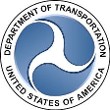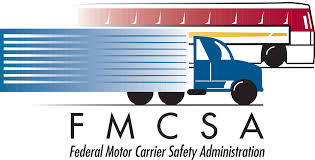
How Distance Affects Auto Transport Pricing
When planning to transport your vehicle across the country or even just a few states over, one of the first questions that comes to mind is, “How much will it cost?” While several factors influence auto transport pricing, distance is perhaps the most significant determinant. At The Car Carriage, we believe in transparency, which is why we’re breaking down exactly how distance affects what you’ll pay to ship your vehicle.
The Basic Formula: Distance + Fuel = Cost
The fundamental relationship between distance and auto transport pricing is straightforward: the farther your vehicle needs to travel, the more you’ll pay. This makes logical sense—longer journeys require more fuel, more driver hours, and more wear and tear on transport equipment.
However, there’s an interesting nuance that many customers don’t initially realize: the cost per mile actually decreases as the total distance increases. Let’s explore why this happens and what it means for your wallet.
Why Cost Per Mile Decreases Over Longer Distances
When shipping a vehicle over a short distance (say, under 500 miles), you might be surprised to find that the cost per mile is relatively high. For example, a 300-mile shipment might cost $1.25 per mile, totaling $375. However, when shipping cross-country (around 2,800 miles), the rate might drop to $0.60 per mile, totaling $1,680.
This happens for several reasons:
- Fixed Costs Absorption: Regardless of distance, certain costs remain fixed—administrative work, vehicle loading and unloading, and initial paperwork. On shorter routes, these fixed costs make up a larger percentage of the total price.
- Operational Efficiency: Long-haul routes allow carriers to operate more efficiently. Drivers can maintain steady highway speeds without frequent stops, resulting in better fuel economy and more miles covered per working hour.
- Route Popularity: Popular long-distance routes (like Los Angeles to New York) often have more carriers competing for business, which can drive down prices.
Breaking Down Distance-Based Pricing Tiers
At The Car Carriage, we generally categorize transport distances into tiers:
- Local (under 100 miles): Often priced at a flat rate rather than per mile
- Short Distance (100-500 miles): Higher per-mile rates, typically $1.00-1.50 per mile
- Medium Distance (500-1,500 miles): Moderate per-mile rates, typically $0.75-1.00 per mile
- Long Distance (1,500+ miles): Lower per-mile rates, typically $0.50-0.75 per mile
Other Distance-Related Factors That Affect Pricing
Distance isn’t just about miles—it’s about geography, accessibility, and logistics. Here are some distance-adjacent factors that influence your auto transport quote:
Route Popularity
Shipping between major metropolitan areas (like Miami to Chicago) generally costs less per mile than shipping between smaller cities or rural areas. This is simply due to volume—carriers prefer routes where they can easily fill their trucks for both the outbound and return journeys.
Regional Factors
Some regions are more expensive to ship to or from, regardless of distance:
- Remote Areas: Locations far from major highways may incur additional charges
- Mountain Regions: Routes through mountainous terrain consume more fuel and take longer
- Urban Centers: Navigating dense city traffic can add time and cost
- Seasonal Changes: Northern routes in winter may incur surcharges due to hazardous conditions
Origin and Destination Specifics
Even when the distance is the same, certain origin-destination pairs cost more due to:
- Access Challenges: Narrow streets, low bridges, or gated communities can add complexity
- Traffic Patterns: Routes through consistently congested areas take longer
- Regional Demand Imbalances: If many people are shipping cars from Florida to New York but few are shipping in the opposite direction, the Florida-to-New York route may be discounted
Cost-Saving Tips for Long-Distance Auto Transport
While distance is a non-negotiable factor, there are ways to optimize your spending when shipping your vehicle over long distances:
- Be Flexible With Timing: If you can wait for a carrier to include your vehicle as part of an already-planned route, you might secure a better rate.
- Choose Terminal-to-Terminal: Door-to-door service is convenient but more expensive. Consider dropping off and picking up your vehicle at terminals if they’re accessible to you.
- Book in Advance: Last-minute shipments, especially for long distances, often come with premium pricing.
- Ship During Off-Season: Summer and early January are peak seasons with higher rates. Consider shipping during fall or late winter when demand is lower.
- Compare Open vs. Enclosed Transport: For standard vehicles traveling long distances, open transport can save you 30-40% compared to enclosed transport.
The Bottom Line
At The Car Carriage, we understand that auto transport is a significant expense, and distance plays the leading role in determining that cost. While longer distances mean higher total costs, the decreasing per-mile rate can make cross-country shipping more economical than you might expect.
When requesting quotes, make sure you’re comparing apples to apples. Some companies might offer seemingly lower rates but add on fees later or utilize less reputable carriers. We pride ourselves on transparent pricing that factors in all distance-related variables upfront.
Ready to get your vehicle on the road? Call 855-723-3200 today for a customized quote that takes into account your specific distance needs and preferences. Our team is standing by to help you navigate the world of auto transport with confidence and ease.








